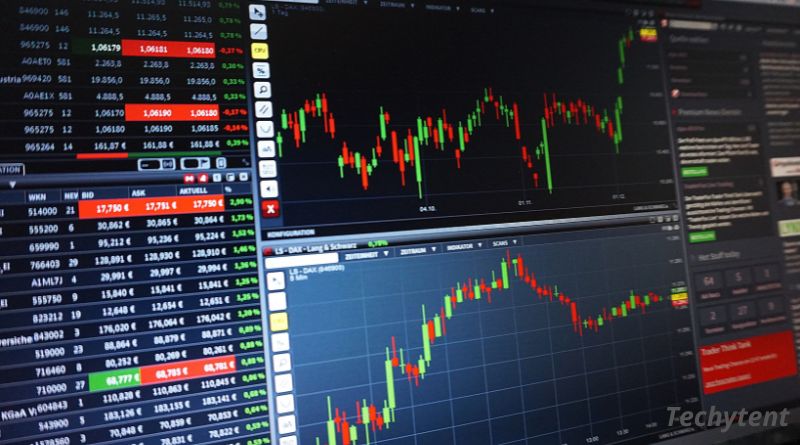What Is Tether? How Does It Work?

As more and more well-known financial institutions and organizations begin to use Bitcoin on their balance sheets, the currency is consistently featured in the media. Stablecoins, which are less susceptible to price swings than other cryptocurrencies, have been gaining traction as an asset class among investors in recent months. As it’s the most valuable, it is often traded on the spot.
What is spot trading?
Cryptocurrency spot trading is the act of purchasing and selling cryptocurrencies in real-time to make a profit. By posting their purchase and sell orders, buyers and sellers generate the spot price. Spot prices may fluctuate constantly in liquid markets, as orders are completed, and new ones are placed.
Recently, there has been a lot of focus placed on stablecoins, which are sometimes referred to as the “silent power players” in the cryptocurrency industry. Concerns over stable currencies, in particular Tether, have been a topic of conversation in the world of finance for the last several months.
What specifically is Tether?
Tether, which was formerly known as a Real coin and trades under the stock symbol USDT, is a cryptocurrency that was introduced in 2014 by Tether Operations Limited. Bitfinex, a cryptocurrency exchange that is headquartered in Hong Kong, is the owner of the corporation known as Tether Operations Limited. Tether was created to function as a stablecoin, which are cryptocurrencies whose value is linked to that of a real-world asset or commodity to maintain price consistency and reduce market volatility.
Tether, often known as USDT, is a cryptocurrency built on the Ethereum blockchain that promises to ensure price parity throughout the entire crypto market. This strategy is used by bitcoin investors who wish to save their capital while avoiding the high volatility of the market.
Tether tokens are the native coinage of the Tether network. These tokens were first introduced by the cryptocurrency exchange BitFinex and are now traded under the denomination USDT.
As of October 2021, the value of one USDT was around $68 billion, placing it as the sixth most valuable cryptocurrency according to market capitalization.
How does Tether function?
Tether Limited oversees the minting and destruction of USDT Tether tokens in line with the reserves that they manage. Tether Limited is also responsible for accepting cash deposits and withdrawals on behalf of customers.
Tether in relation to Bitcoin
Tether was first created and issued on the Bitcoin blockchain via the use of the Omni Layer protocol, which is a platform used for the creation and trade of digital assets that are built on top of Bitcoin.
This technology makes it possible to issue and burn Tether tokens depending on the quantity of the cryptocurrency that is held in custody. Using the protocol, it is also possible to monitor and report on the circulation of Tethers.
Users can examine their own validated transactions on the Bitcoin blockchain by using the Omni Explorer, which is made possible by the fact that the Tether ledger is now maintained on the Bitcoin blockchain due to Omni. Beginning in the year 2020, tethers may also be held as assets on the Bitcoin sidechain known as a liquid.
Tether on several Different Blockchains
Tether is currently accessible on many blockchains, including Ethereum (ETH), Tron (TRX), and EOSIO (EOS). These blockchains all let the creation of new assets to be created natively on their networks, so Tether crypto may be used on all of them. To this day, the Ethereum platform hosts the most significant market for USDT.
Why is it worthwhile to invest in Tether?
Stablecoins are significant because they provide traders with a potent tool for avoiding the often-excessive volatility of cryptocurrency markets. This makes stablecoins a desirable asset.
A trader, for instance, may lessen their exposure to the danger of a rapid collapse in the price of cryptocurrencies by shifting value to USDT. The availability of USDT, as opposed to the use of U.S. dollars, eliminates both the costs of transactions and the delays that hinder the execution of trades within the cryptocurrency market.
Exchanges have similarly discovered that Tether is a valuable tool that allows them to enhance the number of trading pairs that they offer while also helping to enable activity in regions where cash trading may not be possible.
Traders should be aware, however, that the value of Tether has sometimes moved both above and below the target peg that was set for it. For instance, there have been occasions when the price has been influenced by confidence over the extent to which Tethers were backed by assets that were being held in custody by Tether Limited. Traders will also wish to be aware that to issue or redeem Tether coins and assets, they will be required to satisfy the know-your-customer standards imposed by Tether Limited.
Application of Tether
Now, the number of trading pairs for cryptocurrencies that are priced in USDT and other stablecoins is more than the number of trading pairs priced in US dollars. To be more explicit, the three most prevalent use cases are the following:
- Trading – Users may change the cash they need for trading into USDT and then use it to buy other cryptocurrencies, thus reducing the expenses and waiting periods associated with the process.
- Lending: The United States Dollar Trust is often utilized as a landing asset since lenders do not need to be concerned about losses due to volatility.
- Cross Border Payments: Transferring money from one region of the globe to another may be accomplished in a matter of minutes thanks to cross-border payment systems.
Is It a Good Way to Invest Your Money?
There are no substantial alternatives to Tether, making it the most widely used stablecoin. Even when measured against other cryptocurrencies (and not only Stablecoins), its performance in terms of market capitalization is outstanding. After seven years of success, there are no indications that it will begin to decline soon. It is now considered to be one of the “too big to fail” firms operating in the cryptocurrency market.
The Final Verdict
Tether delivers the efficiency and transparency of a cryptocurrency with the bonus of price stability, which may attract the curiosity of users. Transfers with regular banking institutions might take days or even weeks, but those using Tether are instantaneous and cost substantially less. Because of the significant volatility of Bitcoin and Ethereum, most people won’t use them for day-to-day purchases and transactions, but Tether is an excellent alternative.
Now that you also know what spot trading is, you can easily consider investing in Tether for all these reasons and more. There are platforms, exchanges, and wallets that will offer you large interest rates to hold USDT on their platform, even though Tether isn’t necessarily a long-term investment that will increase your money on its own.







